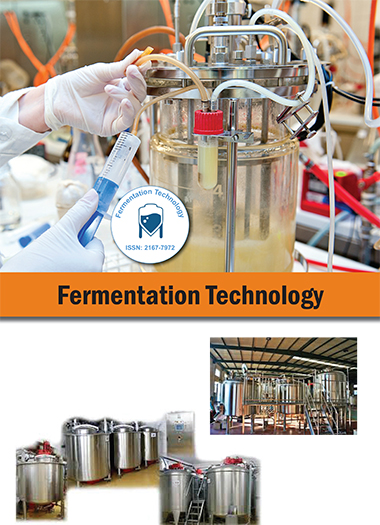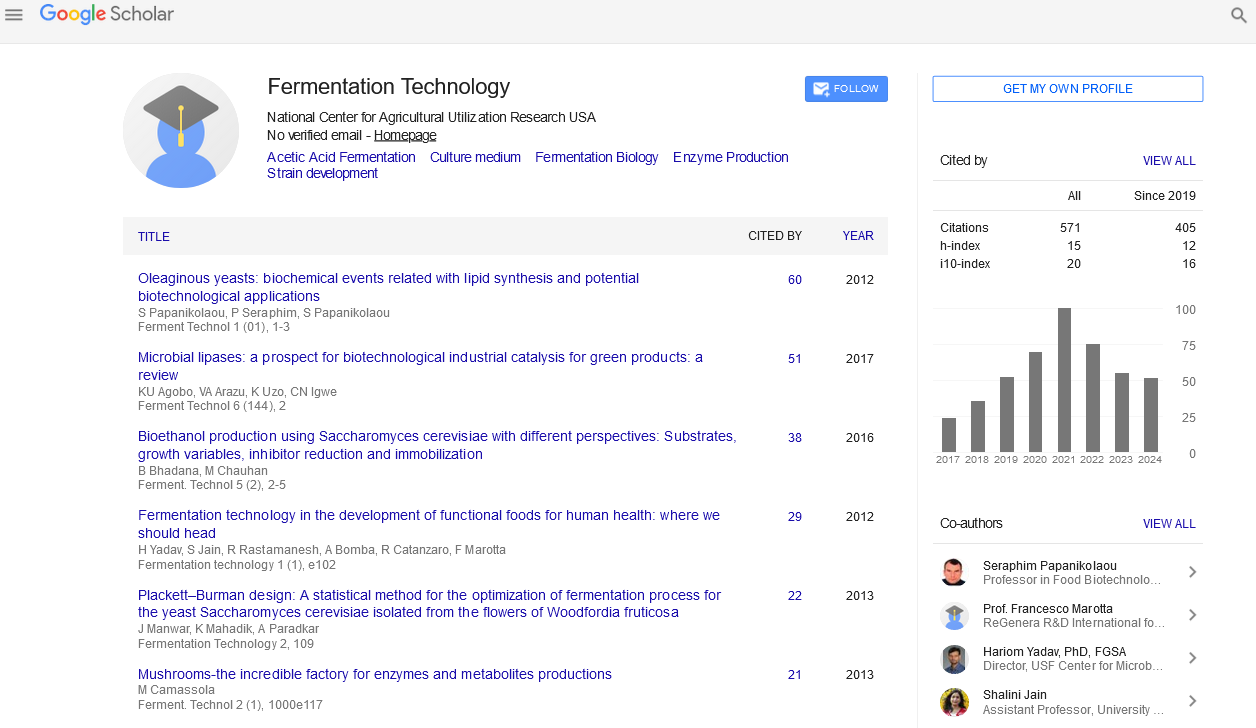Indexed In
- Open J Gate
- Genamics JournalSeek
- Access to Global Online Research in Agriculture (AGORA)
- RefSeek
- Hamdard University
- EBSCO A-Z
- OCLC- WorldCat
- Publons
Useful Links
Share This Page
Journal Flyer

Open Access Journals
- Agri and Aquaculture
- Biochemistry
- Bioinformatics & Systems Biology
- Business & Management
- Chemistry
- Clinical Sciences
- Engineering
- Food & Nutrition
- General Science
- Genetics & Molecular Biology
- Immunology & Microbiology
- Medical Sciences
- Neuroscience & Psychology
- Nursing & Health Care
- Pharmaceutical Sciences
Abstract
Feeding Microbe-Fermented Cassava Tuber Wastes Modulates Gut Microbiota and Faecal Characteristics of Growing Pigs
Aro SO, Aletor VA, Oladunmoye MK
A four week trial was conducted on 42 weanling pigs to study the effect of feeding differently fermented cassava tuber waste (CTW) diets on faecal parameters and enteric microbial ecology of the experimental animals. Seven different diets were formulated. Three of the diets contained 20% inclusion of cassava starch residues in the unfermented, naturally fermented and microbially fermented form respectively and were designated unfermented cassava starch residues (UFCSR), naturally fermented cassava starch residues (NFCSR) and microbially fermented cassava starch residues (MFCSR). Three other diets, similarly formulated but with 20% inclusion of cassava peels were designated as unfermented cassava peels (UFCP), naturally fermented cassava peels (NFCP) and microbially fermented cassava peels (MFCP) respectively. These six CTW diets replaced 30% of maize in the control diet. The two microbially fermented wastes (MFCSR and MFCP) were processed with a combination of two lactic acid bacteria (Lactobacillus coryneformis and Lactobacillus delbrueckii) and a fungus (Aspergillus fumigatus). The results showed significant differences (P<0.05) in the average faecal output, faecal dry matter, faecal volume, faecal pH and the total bacterial counts, while the faecal density and the total fungal counts were similar (P>0.05) among the seven dietary treatments. The biochemical characterization of bacterial and fungal isolates from the faecal samples revealed that the highest bacterial biodiversity was recorded in both the NFCSR and MFCP diets while the control group had the least. Of the 17 different fungal species, 6 were isolated from the control group while 2 each were isolated from the two unfermented CTW diets (UFCSR and UFCP). The biochemical characterization of the microbial isolates also showed that the bacteria- Bacillus spp. and Escherichia coli had the highest frequency of occurrence (100%) across treatments, while Micrococcus luteus had the least frequency (28.57%). The fungus- Mycotypha microsporium had the highest colonizing ability as it was isolated from the faecal samples of pigs in 4 out of the 7 dietary treatments. Conclusively, feeding the CTW diets to pigs could have a profound influence on growth and faecal parameters and by extension on the digestive physiology of the pigs, also these CTW and their methods of processing could modulate the biodiversity of gut microflora in pigs and possibly in any other livestock species.

